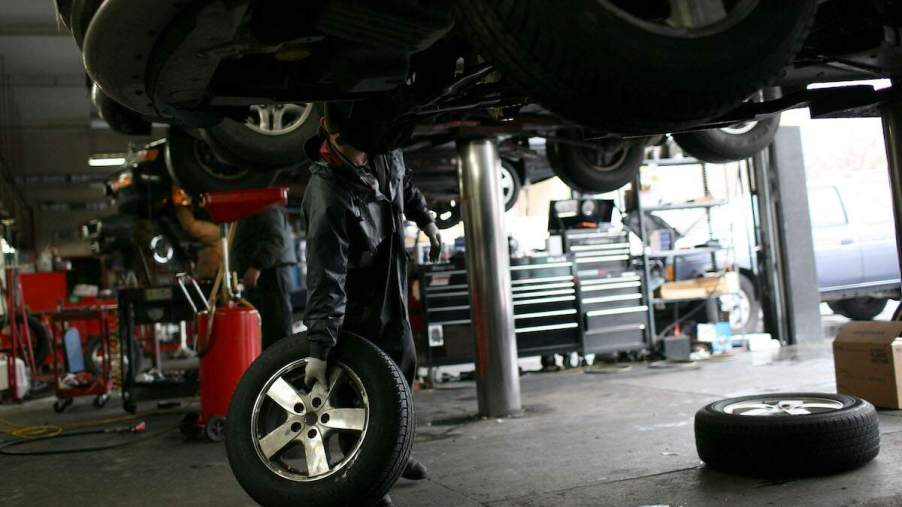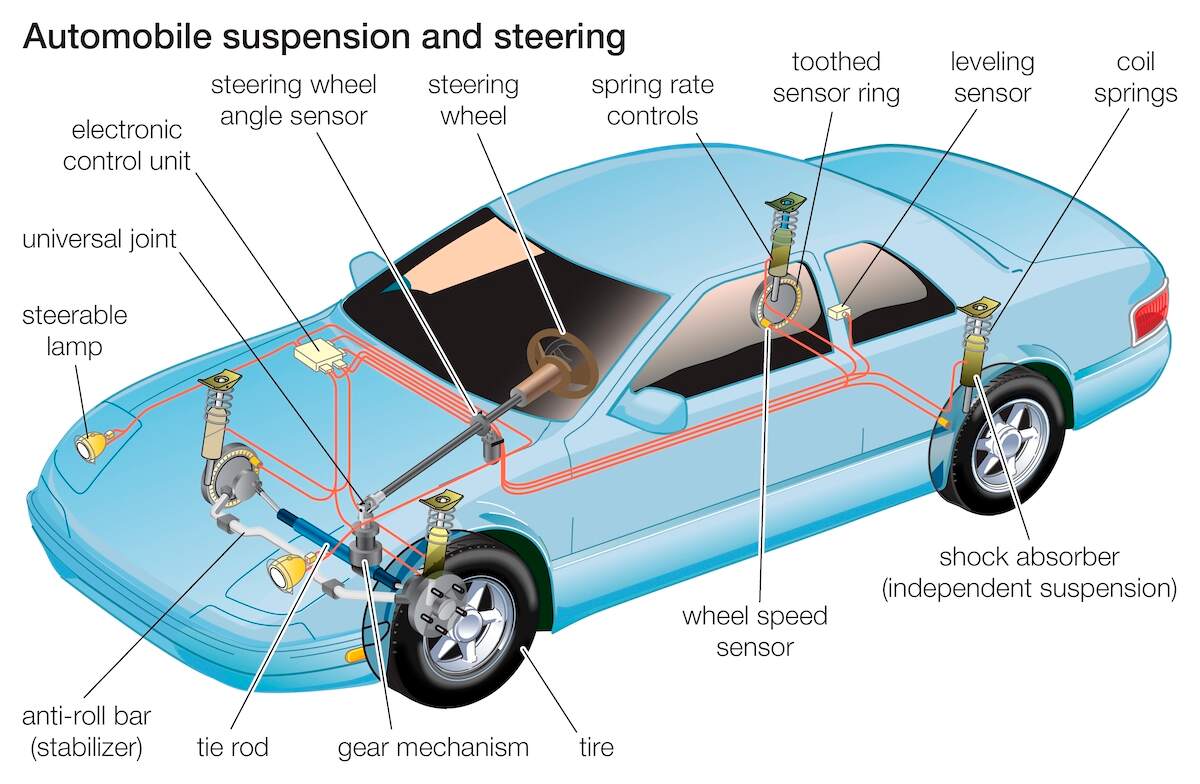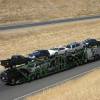
Everything You Need to Know About Tie Rod Auto Maintenance and Replacement
If you don’t know what a tie rod is or its role in steering your car, don’t worry — you’re not alone. Unlike other well-known components requiring maintenance, tie rods are part of an obscure network of parts working together to keep you safely in control of your car. However, you should know what it is, its role in your car, the signs and risks of driving with a damaged tie rod, and expected replacement costs.
What is a tie rod, and what does it do?

Your car’s tie rod is the final link for steering your car, with one attached to the steering knuckle of each front wheel. However, it’s a rather generic term for an assembly of parts, including inner and outer tie rod ends that thread into each end of a spreader bar to adjust the distance between them. This adjustability allows technicians to fine-tune the vehicle’s “tow in,” the amount that the front of the tires is closer together than the rear of the front tires.
Each tie rod end uses a ball joint, much like a ball-and-socket joint, to allow enough flexibility. The socket section threads into the tie rod, whereas the ball portion has a tapered protrusion with threads at the end. The tapered section mates to a matching internal taper within its mating part, while the threaded portion accepts a castellated nut and cotter pin to hold it tight.
What other car parts make up the steering?
The following components make up a typical car’s steering system:
- Steering wheel and attached column
- Steering gearbox with or without a power steering pump and fluid reservoir
- Pitman arm
- Drag link
- Idler arm
- Tie rod (left and right)
- Steering knuckle (left and right)
The gearbox attaches to the bottom of the steering column, while the pitman arm bolts to the bottom of the gearbox. The drag ling spans the distance between the Pitman arm on the driver’s side and the idler arm bolted to the passenger side frame. The tie rods mate to the drag link on one end and the hub’s steering knuckle on the other.
Rack and pinion steering works differently and contains fewer parts. However, most applications still use tie rods with inner and outer ends.
Is it safe to drive with damaged tie rods?
Driving with damaged parts increases the risk of complete steering loss. The following warning signs could indicate your vehicle needs attention:
- Difficulty keeping your car going in a straight line or “play” in your steering wheel.
- Tire wear on one edge or the other. Other alignment issues cause the same symptoms, but a professional inspection is essential for car safety.
- Popping, clicking, or loud thuds from the front of the car when turning.
Repair Smith says replacing a tie rod costs about $185 to $305. However, many variables exist, such as geographic location, your car model, and the type of steering system. In addition, your car might need only the outer or inner tie rod end, but it might also need other parts.
The parts could cost as little as $40, and it’s a moderate DIY project. However, if you decide to diagnose and DIY the issue, you should visit an alignment shop immediately after completing the work.



